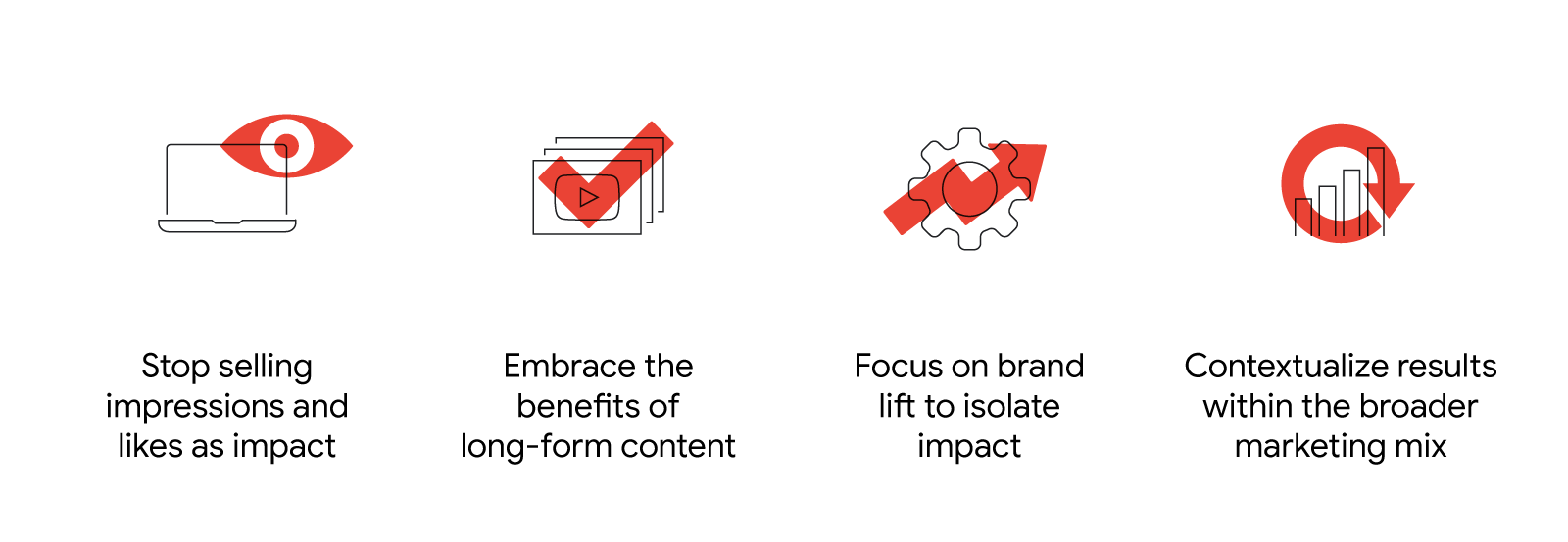As influencer marketing keeps growing, so does the need to demonstrate impact. Google’s Tobias Rauscher shares how he managed to elevate influencer work to be a part of the marketing mix.
Here’s a familiar marketing question: “Have you thought about including influencers as part of this campaign?” The all-too-common nudge often stems from a desire to amplify a marketing message, and the conversation normally includes references to lofty-sounding metrics such as impressions, social media likes, and earned media value.
At Google, we fundamentally believe in the value of influencers. But for influencers to be a credible part of our marketing mix, we had to prove their return beyond vanity metrics, as Marvin Chow, our VP of marketing, has pointed out. “No doubt influencer marketing does something,” he said. “But to comfortably put spend and resources behind it, we needed to better understand the return on investment, especially in the context of other channels.”
The good news: We actually managed to pull it off. The following four points outline how we did it — and what other marketers can learn.

1. Stop selling impressions and likes as impact
Sure, impressions are essential for getting the word out, but they say little about whether the marketing message actually broke through and, if it did, how it resonated with your audience. We too have invited influencers to launch events (pre-pandemic) and packaged the estimated reach of their posts to demonstrate success. Rarely, however, did those posts communicate the intended marketing message, making the reported results unreliable.
Earned media value has the same flaws. It attaches a monetary value to your estimated reach, which is based on a number of assumptions and doesn’t address the attribution challenge. It might sound like an exciting metric, but it’s hard to extract meaning from it.
Impressions are essential for getting the word out, but they say little about whether the marketing message actually broke through and how it resonated.
Our experience with comments is somewhat more nuanced: We love looking at explicit brand mentions but have found little to no correlation between the sentiment of those posts and actual brand lift. Brand mentions in comments can serve as individual proof points that your message broke through but are by no means representative of the whole.
The bottom line: There’s only so much we can track. While there is no harm in tracking what is at your disposal, don’t leave it up to vanity metrics to assess the return on an influencer marketing partnership.
2. Embrace the benefits of long-form content
We didn’t need a sophisticated measurement framework to realize that most of our marketing messages were too complex for static social posts. It would be impossible to explain in just 30 seconds how the Google Assistant can improve your daily life or how you can save money with Google Fi.
Long-form content gave our marketing messages more breathing space. Since YouTube creators excel in that format at scale, it made sense for us to look to them for brand partnerships.
We didn’t need a sophisticated measurement framework to realize that most of our marketing messages were too complex for static social posts.
Following a brief, creators incorporate the branded message or product into their regularly scheduled organic content calendar — in other words, in a video that lives on their channel. For example, online entertainers The Try Guys promoted Google Fi in one of their episodes; designer Mr. Kate showcased Google Lens during a renovation; and “van life” YouTuber Jennelle Eliana used her Pixel phone to capture night photography.



